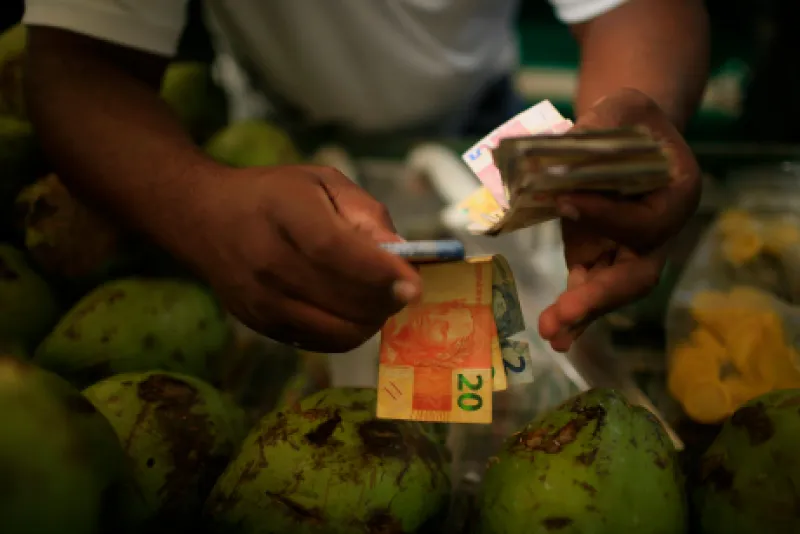The long-term outlook for emerging-markets bonds remains bright, despite the rout of recent days, but don’t expect a return to the stratospheric gains of recent months, analysts and money managers say.
For about six months, emerging-markets bonds soared, as currencies in those countries rebounded, economic fundamentals improved, and bond yields plummeted in developed markets, making emerging-markets yields more attractive.
But emerging-markets bonds have slumped since September 9 because of concern that monetary easing in Europe and Japan won’t match outsize expectations. The Bloomberg Barclays Emerging Market USD Aggregate bond index dropped 1.3 percent from September 9 to 15. Still, many market players see the decline as just a bump in the road.
“The recent sell-off has been driven mostly by a perception of a turn in monetary policy in developed markets, added to the Fed’s ambiguity around the next rate hike and growing uncertainty related to U.S. elections, as opposed to a deterioration of credit fundamentals in emerging markets,” says Gorky Urquieta, co-manager of the Neuberger Berman Emerging Markets Debt Fund. “With that in mind, we believe that the case for emerging-market debt remains compelling.”
The J.P. Morgan Government Bond Index–Emerging Market Global Diversified, which is calculated in local currencies, produced a total return of 15 percent year-to-date through September 14, and the J.P. Morgan Emerging Markets Bond Global Diversified index, which is measured in hard currencies (mostly dollars), generated a return of 13.2 percent. That compares with 4.51 percent for the Bloomberg Barclays US Treasury index.
At the same time, money has been flooding into emerging-markets bonds. According to EPFR Global, which tracks mutual funds, exchange-traded funds and a few hedge funds, emerging-markets bond funds drew a net $30.83 billion in the first eight months of the year, compared with an outflow of $12.13 billion in the year-earlier period.
Although the trend isn’t over, the easy money already has been made, analysts and money managers say. “I think the movement we have seen into emerging-market bonds is justified,” says Pablo Goldberg, senior strategist for emerging-markets debt at New York–based BlackRock. “But the market is starting to move toward indiscriminate buying. Selectivity should be the key.”
After years of gains, emerging-markets bonds began turning down in May 2013, when the Federal Reserve made clear it would soon start winding down its quantitative easing program. Last year emerging-markets bonds suffered from anticipation of interest rate hikes by the Fed, deteriorating economic fundamentals, plunging currencies and falling commodity prices in emerging markets.
But in the first quarter of 2016, those factors shifted. Expectations of Fed rate hikes diminished, economic conditions showed some signs of improvement, currencies rebounded, and commodity prices began to recover. “It feels like a bottoming-out process for the fundamentals,” says Michael Collins, a senior investment officer for Prudential Fixed Income in Newark, New Jersey.
Valuation and yield have also played a major role in the emerging-markets bond rally. The spread of emerging-markets bond yields over Treasuries peaked at a whopping 538 basis points in February. It now stands at 360 basis points, and the Bloomberg Emerging Market USD Sovereign Bond index yields 7.43 percent. “Investors have a need for the yield of these markets,” especially with negative yields pervasive in Europe and Japan, Neuberger Berman’s Urquieta says.
The countries that money managers and analysts find appealing include Brazil, Argentina and Indonesia.
“In Brazil, the market priced in a disaster scenario that we thought was overdone,” Urquieta says. “GDP will be negative this year, but the external account is turning around. External sovereign debt is under 10 percent of GDP, the currency is recovering, and inflation is coming down.”
Economists forecast a GDP contraction of 3.2 percent for Brazil this year. Its current account moved to a surplus in April and May but has since returned to a deficit amid the real’s strength. The U.S. dollar has dropped 23 percent since January 31, to 3.1905 reais. In addition, the ouster of president Dilma Rousseff may lead to more political stability, analysts say.
Argentina has benefited from a market-friendly, pro-reform government that emerged from elections last year. Earlier this year, Argentina settled a protracted debt dispute with foreign hedge funds, agreeing to pay them $4.65 billion and enabling the government to regain access to capital markets.
Argentinean GDP shrank 0.7 percent in the first quarter from the fourth quarter of 2015, its third consecutive quarter-on-quarter contraction. But the economy grew 0.5 percent year-on-year in the first quarter. The Argentineans “have the potential to turn things around, though it won’t happen overnight,” Urquieta says. The same is true in Brazil, BlackRock’s Goldberg notes.
Experts are bullish on Indonesia because of its extensive economic reforms, accelerating growth path and external account improvement. The country’s GDP climbed 5.2 percent in the second quarter from a year earlier. Indonesia’s current-account gap narrowed to $4.68 billion in the second quarter, from $5.1 billion in last year’s fourth quarter. “Indonesia is still on,” Goldberg says.
Money managers and analysts are optimistic about the future for emerging-markets bonds. But don’t expect returns to match those of the past few months, Urquieta says. “There’s still risk,” even though you’re getting paid for that risk, he maintains. Given the more difficult market environment from earlier in the year, security selection is paramount, especially for corporate bonds, Goldberg says.
The ride could be bumpy for investors. Noting the poor performance of local-currency emerging-markets bonds over the past three- and five-year periods, Karin Anderson, associate director of fixed-income strategies at Morningstar in Chicago, warns that volatility is the norm in this space. “Every year there is some emerging-market country falling apart. Ukraine and Venezuela are still good examples,” she says. “If you own them, that's not going to be good.”
Emerging-markets bonds certainly make sense in a balanced portfolio, but not as a core holding, Anderson says.







